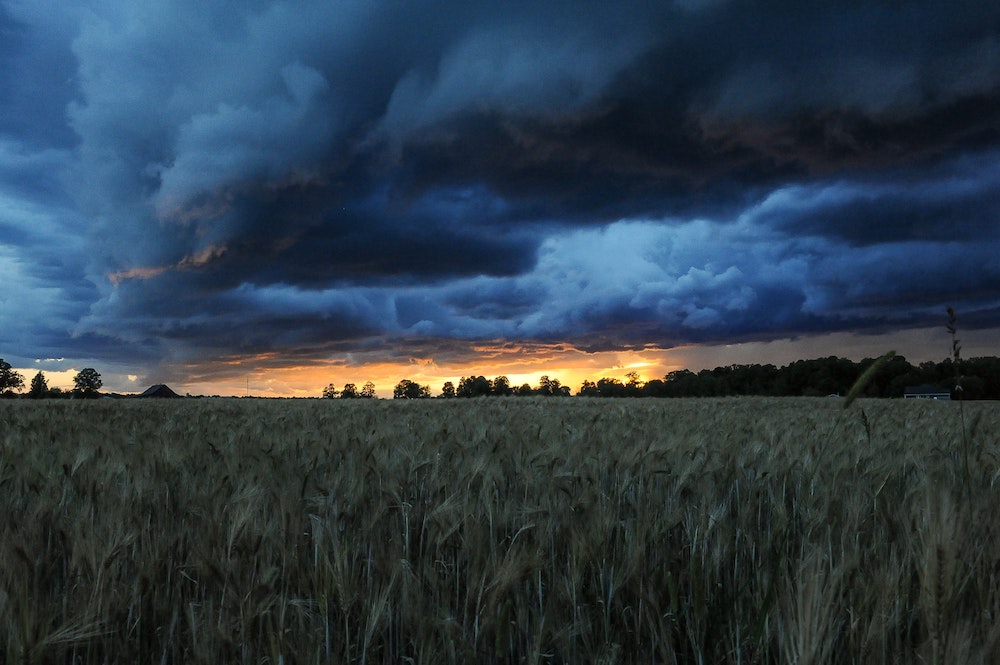-
BOM02: Impacts of hydrological extremes using machine learning

This project will explore the use of supervised and unsupervised statistical learning methods (such as neural networks, random forest, clustering) to understand the impact of climate change on hydrological extremes and/or to simulate downstream impacts on affected sectors, such as agriculture, energy, transport, water resources management.
-
BOM01: Effects of compound hot and dry events on agricultural production in australia

The aim of this project is to investigate the effect of compound hot and dry events on agricultural production in Australia, and to assess the predictability of yield losses due to compound events using seasonal climate and hydrological forecasts. The outcome of the project may inform the development of seasonal forecasts of hydro-climatic risk indicators…
-
UMELB03: Storm organisation and short duration extreme rainfall in Melbourne

In Melbourne, 50% of rainfall and 75% of extreme daily rainfall occurs on days with at least one linearly organized convective system. However, thunderstorms are often localized events, and much of the rainfall in a region falls over a short period of time. Furthermore, not all thunderstorms necessarily occur in lines, and organized storms that…
-
UMELB02: Melbourne flooding and ‘easterly moving’ weather systems

In 1891, Melbourne experienced one of its worst floods on record leading to extensive damage and many deaths. But what was this wayward weather system? How often do lows from our east coast drift westward, and what are their impacts in Victoria? How many of our most significant flooding events are associated with a pattern…
-
UMELB01: Visualising Victoria’s droughts

In this project you will be addressing the challenge of recurring droughts by helping us build a collection of data visualisations to tell the story of Victoria’s parched history. Your collection will help us understand these droughts were experienced by people across the state, and how our understanding of drought is changing as we move…
-
MON02: Characteristics of the southern HEMISPHERE jet stream

The jet stream is a band of strong westerly winds in the upper atmosphere. Shifts in the jet are associated with shifts in the storm tracks, with associated changes in regional weather and rainfall. This project will look at methods to characterise the position and strength of the jet stream in the Southern Hemisphere, with…
-
MON01: Will ANTARCTIC OZONE HOLE RECOVERY affect australian rainfall?

Ozone depletion over Antarctica from the late 1970s to 2000 has been linked to changes in the surface climate over the Southern Hemisphere in summer, among them a more positive Southern Annular Mode (SAM). Over Australian latitudes, a more positive SAM is associated with increased rainfall over eastern Australia in the summer season. Given stratospheric…
-
UTAS01: data collation of the climate-cooling gas dma in antarctic snow, sea ice and UNDERLYING sea water

Dimethyl sulfide (DMS) is a biogenic source of sulfate aerosol that influences the climate system by reducing solar radiation and altering cloud properties. Recent observations suggest that DMS may play a dominant role in the aerosol and cloud formation along the Antarctic coast where DMS is produced by marine microbes that reside on top, in,…
-
UNSW06: Concurrent Hot and Dry Extremes Under Different Atmospheric Carbon Loads

Compound events (CEs) caused by a combination of multiple drivers often result in more severe socio-economic and ecological impacts than conventional events. One example for CEs with the potential to cause considerable negative impacts on crop yields and human health is the cooccurrence of hot and dry conditions. The student will work with climate model…
-
UNSW05: Quantification of Continental-Scale shifts in Extreme Precipitation Intensity Across the Globe

Due to the lack of appropriate historical datasets, quantification of shifts in global extreme precipitation intensity has not been possible so far. This project will use a recently developed long-term global dataset of daily precipitation alongside a dataset of global temperature changes to calculate the CC scaling for broad climatic regions across the globe.
